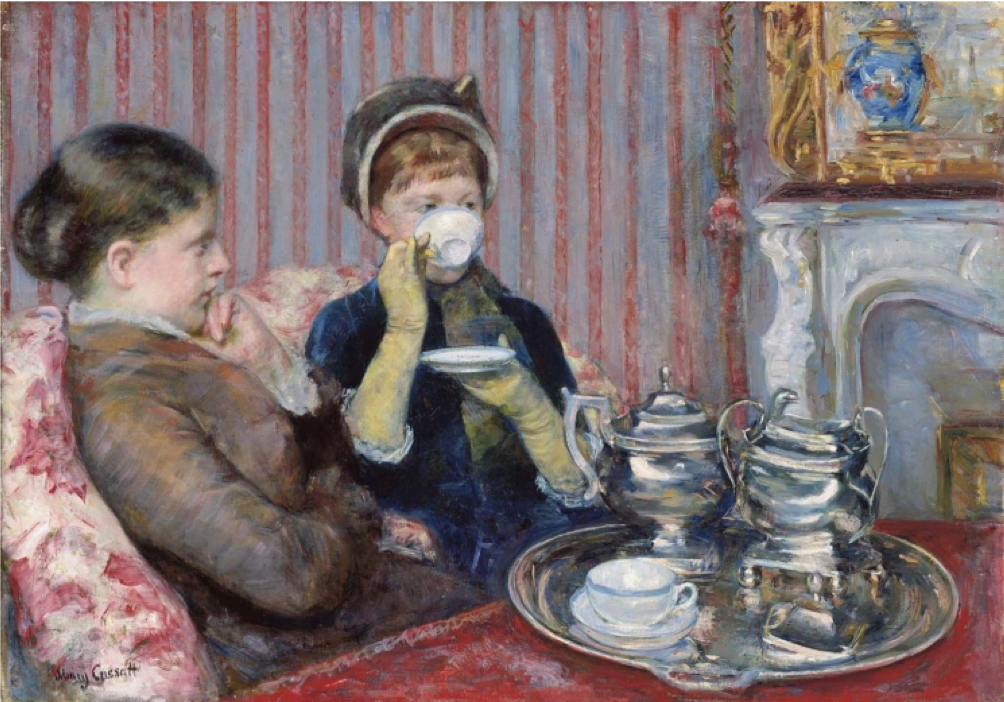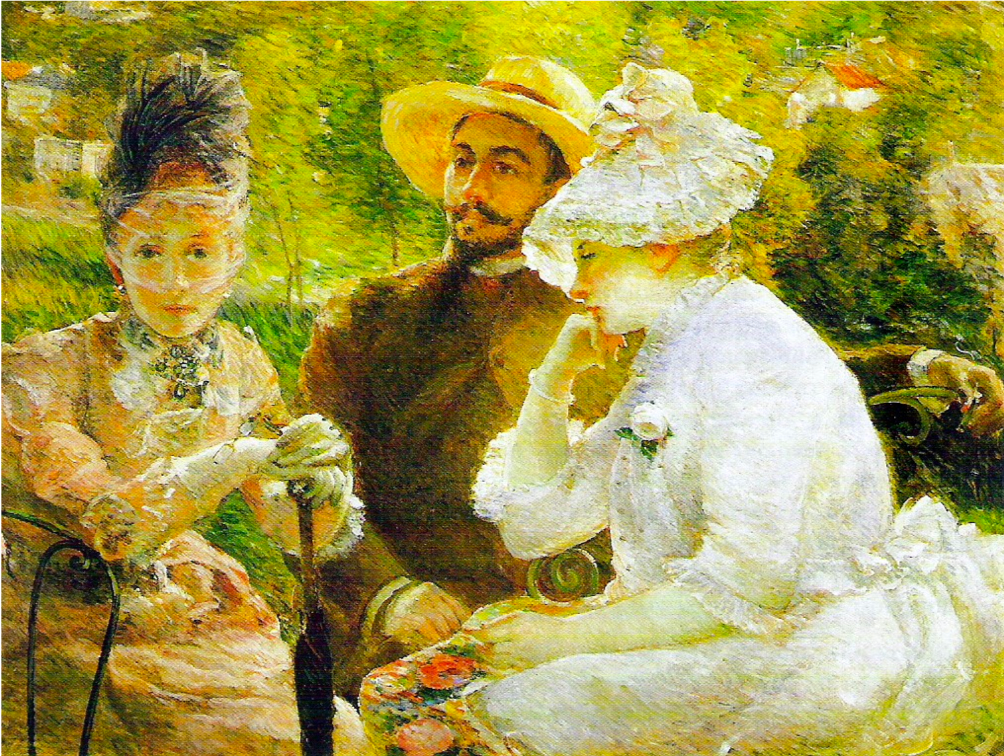The Hidden Female Impressionists
When we refer to the exclusive Impressionist clique in Paris in the late 19th Century, we tend to conjure up an image of bearded flâneurs musing over water-lily-peppered ponds en plein air. Monet, Renoir, Degas and Pissarro are undoubtedly some of the masters of this particular style of painting that took the ordinary, everyday scene as its subject and focussed on the colour effect of light on natural surfaces. There are, however, a number of highly talented women who rubbed shoulders with these artists, yet tend to be forgotten and hidden in the wings, as pre-20th-century female artists so often are. Until the mid-1800s, male artists that were chosen to exhibit at the prestigious annual Salon, would have had traditional and formal training at the École des Beaux-Arts on human anatomy. Women, on the other hand, were unsurprisingly not granted the same luxury and therefore their subject matter was restricted to what they had in front of them, from the confines of their home. Impressionism, by nature, suited them perfectly and a number of female artists flourished. Hélène Bertaux, founder of Paris’s Union des Femmes Peintres et Sculpteurs, summed up this emergence of women on the art-scene in her inaugural address in 1881: “The woman artist is an ignored, little-understood force, delayed in its rise!”
Here are some female Impressionist artists that deserve to be celebrated:
BERTHE MORISOT
Berthe Morisot (January 14, 1841 – March 2, 1895) was born into an affluent family in Bourges, France. She was in fact one of the few women who had her landscape paintings exhibited at the Salon in 1864. The Impressionists first exhibited collectively in Paris in 1874, and Berthe was among them. She went on to participate in all but one of the following eight impressionist exhibitions, between 1874 and 1886. She was closely affiliated with the frontrunners of the movement and even married Édouard Manet’s brother, Eugène. Despite her similar subject matter to her fellow exhibitors, such as domestic scenes and summer outings, her art was frequently and patronisingly described as ‘trivial’. Morisot, however, enjoyed relative success and developed a characteristic, unfinished style, displaying her fascination with the ephemeral moment, always wanting to, in her words, “capture something that passes”. Her loose brushstrokes and refreshing treatment of the banal, breathe life into the otherwise mundane scenes she depicts. In this painting for example, Morisot transports the modern-day spectator back to peaceful Parisian park life as she masterfully and vibrantly reproduces the late-afternoon dappled sunlight on the Bois de Boulogne ponds.
Berthe Morisot, Jour d’été, 1879, National Portrait Gallery, London
MARY CASSATT
Mary Stevenson Cassatt (May 22, 1844 - June 14, 1926) was an American painter and printmaker. She lived much of her adult life in France, where she first befriended Edgar Degas and later exhibited among the Impressionists. Cassatt’s focus lay on mother-child relationships as well as the restrictive societal barriers 19th-century women faced, and she spent much of her time portraying women partaking in activities deemed ‘suitable’ for women, such as tea-drinking and reading. She added subtle hints to her paintings, such as striped wallpapers to imply prison-like bars, and added a depth of dignity to the women she drew which helped convey her feminist message. Cassatt was constantly pushing boundaries in the male-dominated art world and even surprised Degas with her painting La Toilette, who then remarked, “I don’t believe a woman could draw that well. Did you really do this?”. She was an outspoken advocate for women’s rights and campaigned for the right to vote in 1910. For her services to art, Cassatt was awarded the Légion d’honneur in 1904.
Tea by Mary Cassatt, 1880, oil on canvas, 25½ × 36¼ in., Museum of Fine Arts, Boston
MARIE BRACQUEMOND
Marie Bracquemond (December 1, 1840 – January 17, 1916) was born in Brittany to a much less affluent background than Cassatt and Morisot. She was described retrospectively by Henri Focillon in 1928 as one of "les trois grandes dames” of Impressionism alongside the other two, albeit far less well-known. Many believe this is in part due to her husband who disagreed fervently with her impressionist style and stifled her chance at large-scale recognition. Despite this, she was a loyal collaborator with the Impressionists, with a perhaps a more vibrant palette than many of the others, but with a consistent focus on women outdoors.
On the Terrace at Sèvres, Musée du Petit Palais, Geneva, Switzerland 1880
EVA GONZALÈS
Eva Gonzalès (April 19, 1849 – May 6, 1883) was another French Impressionist painter, however, never actually exhibited with them. Gonzalès is best known for her starting out as a pupil of the artist Édouard Manet in February 1869. While studying under Manet, Gonzales painted various self-portraits and Manet painted a number of portraits of her. Her subtle changes to the style he chose for her imply she was keen to explore her individuality and identity as an artist. Until 1872, Manet’s work had a powerful influence on her, but she later developed her own, more personal style. Similar to the other female impressionist painters, she was not at liberty to wander freely the streets of Paris capturing the urban dwellers , yet was more restricted to domestic scenes appropriate for women.
Woman Awakening, 1876, Kunsthalle Bremen, Bremen, Germany
By Hebe (French and Italian, University of Oxford)
Keen to learn from some of Minds Underground’s Great History of Art Minds?
Our team includes a number of MA History of Art, Courtauld Institute of Art current candidates and graduates, Oxbridge-educated History of Artist graduates including a current undergraduate supervisor for the History of Art department at the University of Cambridge for the Display of Art module, the museum history and theory course, and Tudor Visual Culture. We host an array of exciting History of Art masterclasses and support students’ History of Art university applications via our on-curriculum division, U2.



